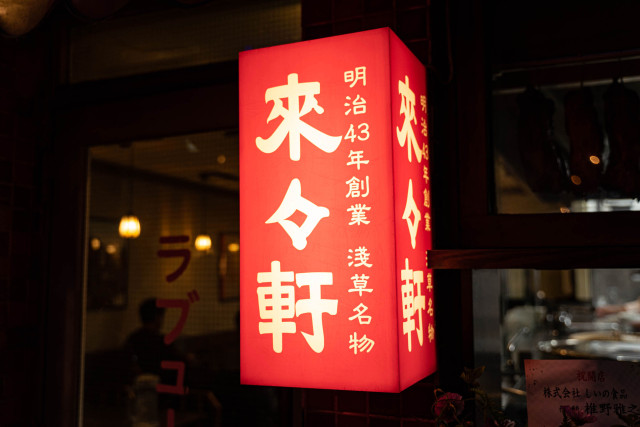
Tasting history at Rairaiken, the restaurant that introduced Japan to ramen over 100 years ago.
There are plenty of unique ramen restaurants around Japan that proudly boast unique attributes like Michelin stars, idol singers, and straight-up fire, but only one can lay claim as being the country’s very first ramen restaurant, and that accolade goes to Rairaiken, which opened in in Tokyo’s Asakusa neighbourhood in 1910.
Back then, Rairaiken was staffed by cooks from Chinatown in Yokohama and was so popular it served as many as 3,000 customers a day. However, Rairaiken’s success didn’t last forever, sadly, as the business eventually closed its doors in 1976, after there were no candidates willing to take on the family business.
▼ Rairaiken in 1914 (left), and its founder, Kanichi Ozaki (right)
Now, 44 years after its closure, Rairaiken has been brought back to life, thanks to the efforts of the Shin Yokohama Raumen Museum, who has been researching the original restaurant with Ozaki’s grandson, Kunio Takahashi, and great-great-grandson, Yusaku Takahashi.
Kunio’s first-hand experience of eating ramen at Rairaiken’s original location has helped the museum to faithfully recreate both the atmosphere and the menu from the restaurant, right down to the ingredients used to make their noodles and toppings.
We paid a visit to the newly opened Rairaiken, which is now located inside the Shin Yokohama Raumen Museum, and when we arrived, we found the signage paid homage to the original store sign, using the same decorative font for the name of the restaurant, with “浅草名物” (Asakusa Meibutsu [“Asakusa Specialty”]) also appearing as it did on the original storefront.
▼ It also records its founding year of Meiji 43 (1910)
Like many ramen restaurants, the modern-day Rairaiken takes orders through a ticket machine, and the top recommendation here is the standard “Raumen”, which is priced at 1,100 yen (US$10.44) and limited to 100 meals a day.
Another Raumen option uses machine-made noodles, as opposed to handmade ones, and is slightly cheaper, at 930 yen. There’s also Wonton noodles for 1,130 yen and Char Siu noodles for 1,400 yen, and the most expensive option on the menu is Char Siu Wonton noodles, priced at 1,600 yen. There are some non-noodle offerings available too, namely shumai dumplings, which start at 150 yen each.
We really wanted to try the expensive Char Siu Wonton noodles but they were already sold out when we visited on a weekday evening. So instead, we ordered a bowl of Raumen and three shumai dumplings.
▼ After a short wait, the legendary ramen finally arrived.
The ramen at this revival restaurant has been painstakingly reproduced to replicate the flavours of the original dishes, even using flour that’s said to be the genetic descendant of the variety first used by Rairaiken. This is just one of the many fine details you’ll come across at the new restaurant — even the package on the chopsticks is beautifully adorned.
Rairaiken specialised in soy sauce broth ramen, and that same broth appears in these new noodle dishes. As it sparkled deliciously in the light, we were reminded of the fact that the history of all soy sauce ramen in Japan today can be traced back to this one soy sauce ramen that started it all over a century ago.
Humbled, we took up our chopsticks and picked up a mouthful of the legendary ramen. The noodles had a smooth surface and a nice, rectangular cross section, and their mouthfeel was perfectly soft and chewy.
▼ Slurping the noodles together with the broth allowed the flavours to meld beautifully on the tongue.
Looking at the char siu, we could see it wasn’t the soft and simmered pork often used in ramen these days, but hard and rich-flavoured roast pork. This char siu was an apt reproduction from the days of yore, and it gave the whole dish an added depth of flavour.
▼ The soy sauce broth glistened with oil, and its flavour was magnificent.
A lot of ramen places these days serve gyoza pot stickers as a popular side dish, but before World War II, shumai dumplings were the common option. Eating these dumplings on the side instantly transported us back to those pre-war days when ramen was just being introduced to the country.
These shumai weren’t anything like the ones we usually eat either, as they were much larger than the bite-sized ones often served in Japan. The generous fillings were delicious and complemented the salty soy sauce ramen so well we were tempted to order another plate of them.
As we ate our noodles and shumai, we were surprised by how understated they were. Lots of ramen joints these days like to play with conventional ingredients to entice customers, but there were no such frills here. Thinking about it, that’s exactly what makes this ramen so good — when you’re the originator of a new dish in a new country, you don’t need to dress things up with unnecessary details.
This was a hearty bowl of noodles that filled both our bellies and hearts with warmth. Despite being simple, or maybe because of it, this bowl of ramen turned out to be one of the best we’ve ever tasted, and it left us with a deeper appreciation for ramen and its long history in Japan.
If we were a customer at Rairaiken tasting ramen for the first time ever, we would definitely be blown away by the taste of this meal. So it’s nice that now, 110 years after it was first opened, Rairaken is once again making its customers appreciate ramen anew…even if they’ve tried everything from chocolate to piranhas with their noodles.
Related: Shin Yokohama Raumen Museum
Featured image ©SoraNews24
Insert images: @Press, ©SoraNews24
● Want to hear about SoraNews24’s latest articles as soon as they’re published? Follow us on Facebook and Twitter!
[ Read in Japanese ]

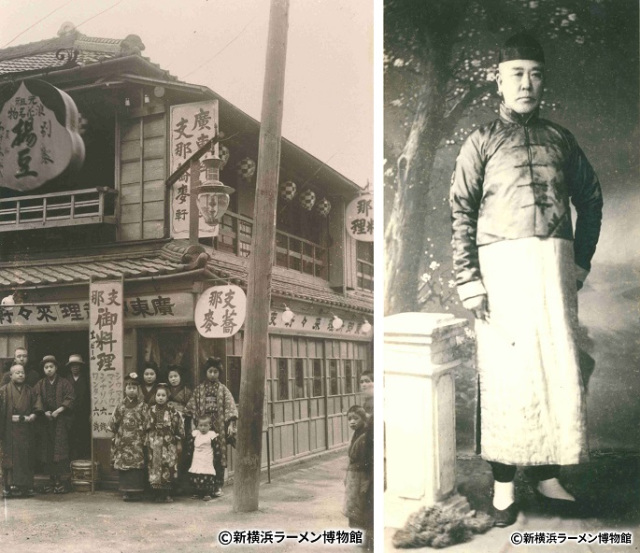

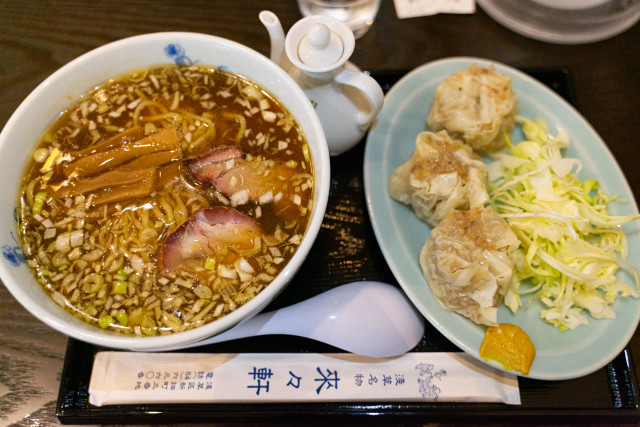
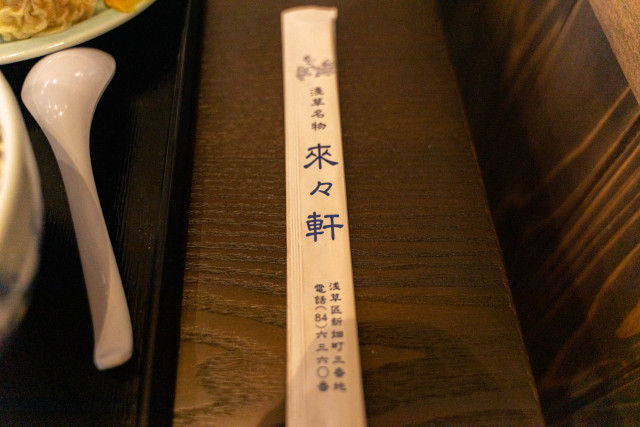
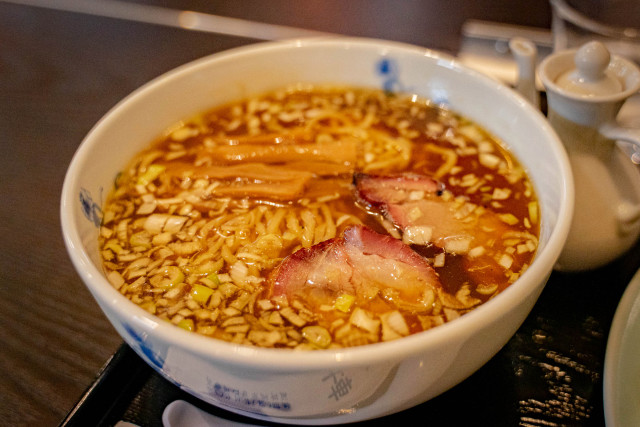
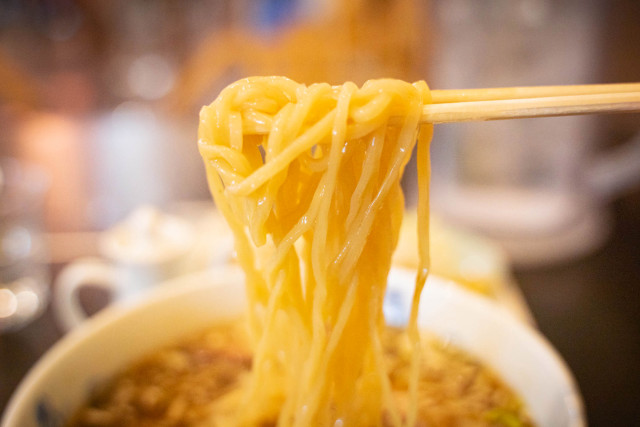

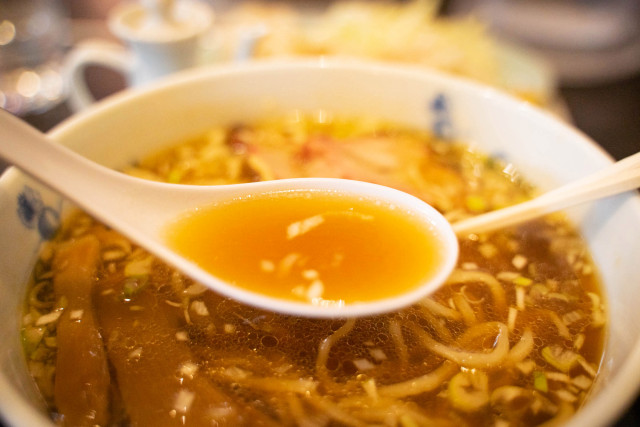
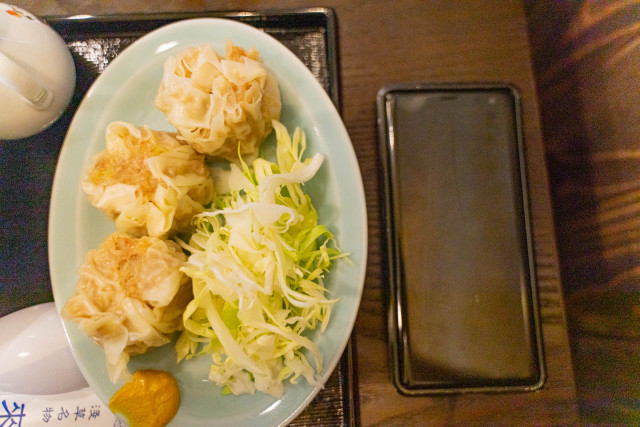
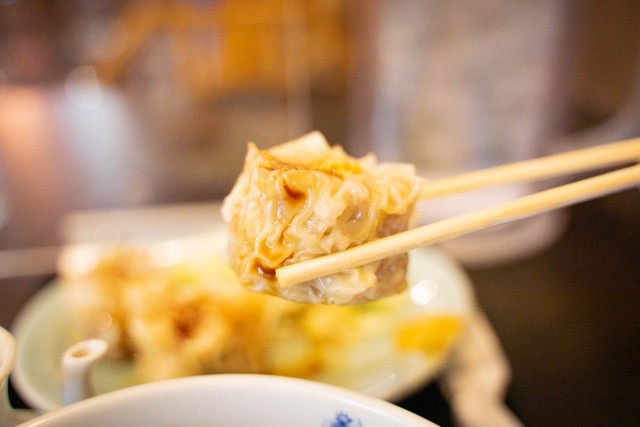
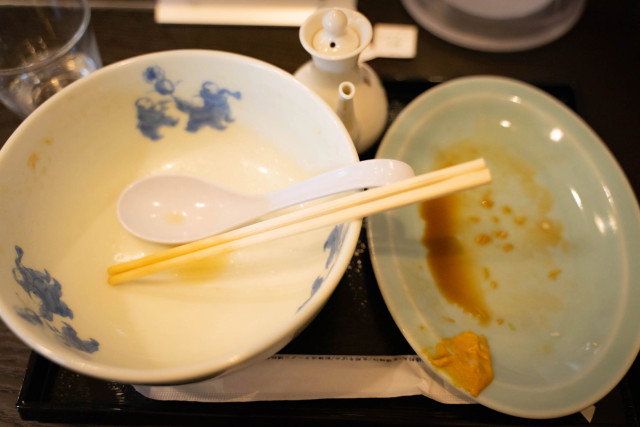
 Japan’s first-ever ramen restaurant, which closed 44 years ago, is reopening this fall!
Japan’s first-ever ramen restaurant, which closed 44 years ago, is reopening this fall! This ramen restaurant has no name, is one of the best hidden finds in Japan
This ramen restaurant has no name, is one of the best hidden finds in Japan Japanese ramen chain has some hidden treats on the menu
Japanese ramen chain has some hidden treats on the menu Japanese ramen chain becomes a hot topic with foreigners on Reddit, but is it any good?
Japanese ramen chain becomes a hot topic with foreigners on Reddit, but is it any good? Want to try this super popular ramen shop, but can’t get a reservation? We’ve got tips for you
Want to try this super popular ramen shop, but can’t get a reservation? We’ve got tips for you Brand-new all-Harry Potter theme park could be opening in Tokyo
Brand-new all-Harry Potter theme park could be opening in Tokyo Cup Noodle tries an authentic Jiro-style ramen, but something’s not quite right
Cup Noodle tries an authentic Jiro-style ramen, but something’s not quite right What did Shibuya really look like after the crowds on New Year’s Day?
What did Shibuya really look like after the crowds on New Year’s Day? Hayao Miyazaki says Happy New Year to Studio Ghibli fans with new art for Year of the Horse
Hayao Miyazaki says Happy New Year to Studio Ghibli fans with new art for Year of the Horse One of Tokyo’s best hot spring complexes is closing for good
One of Tokyo’s best hot spring complexes is closing for good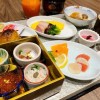 Ginza hotel serves up one of the best breakfasts in Tokyo
Ginza hotel serves up one of the best breakfasts in Tokyo You can now visit a recreation of Evangelion’s Tokyo-3 and live there in miniature form in【Pics】
You can now visit a recreation of Evangelion’s Tokyo-3 and live there in miniature form in【Pics】 Starbucks Japan unveils new Sakura Frappuccino for cherry blossom season 2025
Starbucks Japan unveils new Sakura Frappuccino for cherry blossom season 2025 Kansai-exclusive takoyaki Cup Noodle lives up to half of the expectations its name produces
Kansai-exclusive takoyaki Cup Noodle lives up to half of the expectations its name produces Evangelion original anime studio Gainax is now completely dissolved, Eva’s creator mourns ruined friendships
Evangelion original anime studio Gainax is now completely dissolved, Eva’s creator mourns ruined friendships Starbucks Japan ready to get Year of the Horse started with adorable drinkware and plushies【Pics】
Starbucks Japan ready to get Year of the Horse started with adorable drinkware and plushies【Pics】 7 great places to see Mt. Fuji from without having to climb it
7 great places to see Mt. Fuji from without having to climb it Cyberpunk anime meets traditional culture in Ghost in the Shell gold leaf Japanese changing screens
Cyberpunk anime meets traditional culture in Ghost in the Shell gold leaf Japanese changing screens Hello Kitty Choco Egg figures are an adorable trip through three periods of Japanese pop culture【Pics】
Hello Kitty Choco Egg figures are an adorable trip through three periods of Japanese pop culture【Pics】 We found possibly the quietest Japanese-style hotel in Tokyo’s bustling Shinjuku district
We found possibly the quietest Japanese-style hotel in Tokyo’s bustling Shinjuku district 7-Eleven Japan’s ramen-cooking robot whipped us up a bowl of noodles【Taste test】
7-Eleven Japan’s ramen-cooking robot whipped us up a bowl of noodles【Taste test】 Sumo Sanrio! Hello Kitty and pals team up with Japan Sumo Association for new merch【Pics】
Sumo Sanrio! Hello Kitty and pals team up with Japan Sumo Association for new merch【Pics】 Japan’s oldest largetooth sawfish in captivity back on display in Mie Prefecture
Japan’s oldest largetooth sawfish in captivity back on display in Mie Prefecture More Than a Capsule Stay: Why Solo Travelers Choose “global cabin Yokohama Chinatown”
More Than a Capsule Stay: Why Solo Travelers Choose “global cabin Yokohama Chinatown” 7-Eleven Japan starts new temporary luggage storage service in over 300 branches
7-Eleven Japan starts new temporary luggage storage service in over 300 branches Disillusionment at Tsukiji’s tourist-target prices led us to a great ramen restaurant in Tokyo
Disillusionment at Tsukiji’s tourist-target prices led us to a great ramen restaurant in Tokyo Starbucks teams up with 166-year-old Kyoto doll maker for Year of the Horse decorations【Photos】
Starbucks teams up with 166-year-old Kyoto doll maker for Year of the Horse decorations【Photos】 Tokyo considering law requiring more trash cans following litter increase in heavily touristed area
Tokyo considering law requiring more trash cans following litter increase in heavily touristed area Tokyo’s Tsukiji sushi neighborhood asks tour groups to stay away for the rest of the month
Tokyo’s Tsukiji sushi neighborhood asks tour groups to stay away for the rest of the month Tokyo event lets you travel back in time, for free, to celebrate 100 years since Showa era start
Tokyo event lets you travel back in time, for free, to celebrate 100 years since Showa era start Sanrio theme park in Japan announces plans to expand into a Sanrio resort
Sanrio theme park in Japan announces plans to expand into a Sanrio resort Japan may add Japanese language proficiency, lifestyle classes to permanent foreign resident requirements
Japan may add Japanese language proficiency, lifestyle classes to permanent foreign resident requirements Stamina-destroying “Paralysis Noodles” are Tokyo’s newest over-the-top ramen innovation
Stamina-destroying “Paralysis Noodles” are Tokyo’s newest over-the-top ramen innovation Survey asks foreign tourists what bothered them in Japan, more than half gave same answer
Survey asks foreign tourists what bothered them in Japan, more than half gave same answer Japan’s human washing machines will go on sale to general public, demos to be held in Tokyo
Japan’s human washing machines will go on sale to general public, demos to be held in Tokyo Japan’s deadliest food claims more victims, but why do people keep eating it for New Year’s?
Japan’s deadliest food claims more victims, but why do people keep eating it for New Year’s? We deeply regret going into this tunnel on our walk in the mountains of Japan
We deeply regret going into this tunnel on our walk in the mountains of Japan Studio Ghibli releases Kodama forest spirits from Princess Mononoke to light up your home
Studio Ghibli releases Kodama forest spirits from Princess Mononoke to light up your home Major Japanese hotel chain says reservations via overseas booking sites may not be valid
Major Japanese hotel chain says reservations via overseas booking sites may not be valid Put sesame oil in your coffee? Japanese maker says it’s the best way to start your day【Taste test】
Put sesame oil in your coffee? Japanese maker says it’s the best way to start your day【Taste test】 No more using real katana for tourism activities, Japan’s National Police Agency says
No more using real katana for tourism activities, Japan’s National Police Agency says Starbucks Japan reveals new sakura drinkware collection, inspired by evening cherry blossoms
Starbucks Japan reveals new sakura drinkware collection, inspired by evening cherry blossoms Updated cherry blossom forecast shows extra-long sakura season for Japan this year
Updated cherry blossom forecast shows extra-long sakura season for Japan this year Fried mochi ice cream ramen makes us rethink the way we eat noodles
Fried mochi ice cream ramen makes us rethink the way we eat noodles Ramen kaiseki: Japanese restaurant offers first-ever multi-course noodle experience
Ramen kaiseki: Japanese restaurant offers first-ever multi-course noodle experience “Hey, Japanese taxi driver, take us to the best Sano ramen in Sano!”
“Hey, Japanese taxi driver, take us to the best Sano ramen in Sano!” Tonkotsu ramen rice bowl blows our minds, makes us appreciate noodles in a new light
Tonkotsu ramen rice bowl blows our minds, makes us appreciate noodles in a new light The story behind “the most hopeful ramen bar in the world”
The story behind “the most hopeful ramen bar in the world” First ever Pringles instant cup ramen noodles are coming to Japan
First ever Pringles instant cup ramen noodles are coming to Japan Ramen vending machine in Tokyo satisfies noodle and gyoza cravings at any time of day or night
Ramen vending machine in Tokyo satisfies noodle and gyoza cravings at any time of day or night Gyoza ramen! Two of Japan’s best comfort foods in one bowl at innovative restaurant【Taste test】
Gyoza ramen! Two of Japan’s best comfort foods in one bowl at innovative restaurant【Taste test】 Ippudo serves up plant-based tonkotsu ramen in Japan for a limited time
Ippudo serves up plant-based tonkotsu ramen in Japan for a limited time We get to be (probably) the first ever to try Nissin Cup Noodle’s latest creation: Gyoza ramen!
We get to be (probably) the first ever to try Nissin Cup Noodle’s latest creation: Gyoza ramen! Takeout ramen broth: A new Tokyo winter noodle trend that’s worth the hype? 【Taste Test】
Takeout ramen broth: A new Tokyo winter noodle trend that’s worth the hype? 【Taste Test】 New Noodles and Broth Only cup ramen – Saddest meal ever, or proof that less is more?【Taste test】
New Noodles and Broth Only cup ramen – Saddest meal ever, or proof that less is more?【Taste test】 Yabai Ramen: What makes this Japanese ramen so dangerous?
Yabai Ramen: What makes this Japanese ramen so dangerous? Sushi Ramen restaurant serves up the best of both worlds in one epic Japanese meal
Sushi Ramen restaurant serves up the best of both worlds in one epic Japanese meal We try a dish from Japan’s Michelin-starred ramen restaurant…at the convenience store!
We try a dish from Japan’s Michelin-starred ramen restaurant…at the convenience store! We order microwavable takeout ramen from a ramen shop…but is it as good as eating in-house?
We order microwavable takeout ramen from a ramen shop…but is it as good as eating in-house? Now you can order insect ramen to eat at home
Now you can order insect ramen to eat at home
Leave a Reply